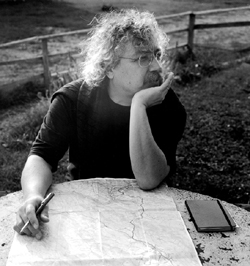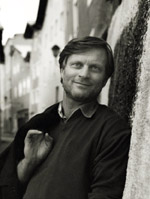En Route Through the ‘Other’ Europe


Karl-Markus Gauß / Kurt Kaindl
One of the misconceptions of our time is the assumption that there is little left in Europe to be discovered. Karl-Markus Gauß and Kurt Kaindl prove otherwise with their reportage on the 'other’ Europe, where luxury and the "cutting edge" have not yet reached. In a collaborative effort, Gauß took up pen and, together with Kaindl and his camera, began a journey through the ten new members of the European Union to seek out the cultural richness of Europe¹s unknown corners and unrevealed lives. The following is a small selection from their work since 1999 on the new member countries of Central, Eastern,- and Southern Europe.
Karl-Markus Gauß was born in Salzburg, Austria in 1954. He lives there as a freelance writer of essays and literary criticism and publishes of one of the finest Austrian literary journals, Literatur und Kritik. Mr. Gauß is one of the most sought-after writers in German-speaking feuilletons. He has won numerous honors and prizes such as the National Award for Cultural Journalism (1994), the Honorary Prize of the Austrian Booktrade for Tolerance in Thought and Action (2001), as well as the Rene Marcic Prize(2004). Gauß is well known for his recent, selective study of minority groups in Central Europe i.e. Die sterbenden Europäer (2001) with photographs from Kurt Kaindl, as well as for his contributions to the newspapers, die Zeit and der Standard.
Born in Gmunden, Austria in 1954, Kurt Kaindl works as a photographer, curator and media specialist in Salzburg. He has exhibited his own photographic oeuvre for nearly 30 years. In 1981 he co-founded the gallery "Fotohof." He received a Ph.D in literature in 1983. He has held lecturing positions at the Universities of Salzburg, Munich, Eichstätt, Bamberg, and at Georgia State University in Atlanta, and has taught the history and theory of Press Photography. He has authored numerous publications on the history of photography in Austria. Publications of illustrated books include Innergebirg. Wege in die Tauern (1986); Wurzmühle. Industriearchäologie aus dem oberen Waldviertel (1994), Abfischen (1997) and Die unbekannten Europäer (2002).
We have chosen the photograph "Ritual Crossing of Borders in Pongratzen" as front cover for this issue. The Austrian-born photographer, Inge Morath, took this picture of the boundary stone between Austria and Slovenia shortly before her death. For more than eight decades the village of Pongratzen was split in half by this border. To celebrate their common heritage, it was the custom of the inhabitants to cross to the other side once a year. While exploring the meaning of visible and invisible boundaries, of space and time, Inge Morath captured the true significance of European enlargement. The photo has now become history.
